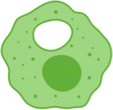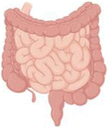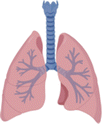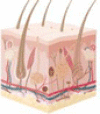Table 1.
Effect of 5-HT7 receptor signaling on different immune cells and inflammatory conditions
| Cell Type | 5-HT7 Effect | |
| Dendritic cells |  |
●Induces secretion of IL-1β and IL-8; reduces secretion of IL-12 and TNF-α ●Induces process branching and elongation |
| Monocytes, Macrophagues, Microglia |  |
●Pro- and anti-inflammatory ○Anti-apoptotic ○Increase in TNF-α, IL-6, Bcl-6, NF-kB ○AS-19 (agonist) decreases IL-12, TNF-α, and type 1 interferons; enhances production of TGF-β1 ○SB-269970 (antagonist) increases TNF-α and IL-12 |
| Lymphocyte |  |
●Concanavalin A, reserpine, and physical restrain increased expression of 5-HT7 ●Increase in proliferation rate, expression of CD25 |
| Disease Model | 5-HT7 Effect | |
| Inflammatory Bowel Disease |  |
●5-HT7 expression increased in DSS-induced colitis ●5-HT7 blockade/ablation results in increased severity of acute and chronic colitis ●5-HT7 agonists have anti-inflammatory effect |
| Lung Injury |  |
●5-HT7 antagonists decrease lung fluid content, TNF-α, IL-6, oxidative stress in bleomycin-induced lung injury ●5-HT7 antagonists reduce collagen deposition, expression of TGF-β1 and procollagen type Ӏ |
| Central nervous system inflammation |  |
●LP-211 (agonist) reduces neurotoxic effect of β-amyloid in a model of Alzheimer disease ●AS-19 (agonist) reduces pro-apoptotic effect of streptozotocin |
| Sepsis |  |
●In LPS-induced sepsis, 5-HT7 mRNA increases in parallel to TNF-α, IL-1β, NF-κB ●LP-44 (agonist) attenuates cell injury and reduces iNOS and TNF-α ●In a CLP-induced sepsis, AS19 increases survival; reduces tissue injury, inflammatory cytokines, lung NF-κB |
| Liver Injury |  |
●5-HT7 signaling induced during chronic liver injury ○Reduced ALT and AST levels ○Increased superoxide dismutase ○Reduced TNF-α, IL-6, TGF-β1 |
| Soft tissue inflamation |  |
●In carrageenan-induced paw inflammation, 5-HT7 agonists reduce cyclooxygenase mRNA expression; decrease oxidative stress, serum cytokine levels |
